Top 5 Takeaways from GAMA Trade Show 2017

Las Vegas. It’s the home of some of the most amazing and awe-inspiring venues known to humankind. It’s also a gathering place for people of all walks of life to enjoy all kinds of entertainment, from the risqué and bizarre to world-class music and artistry.
But buried among all the hustle and bustle of Las Vegas is a gem of a convention that only board game industry insiders have access to: GAMA Trade Show. Unlike major consumer shows like Gen Con, Origins, and Essen SPIEL, the atmosphere is relatively calm and opportunities abound to network with some of the best game publishers around. For two days (plus several other days of presentations and other events), publishers from all over the world put their products on display for retailers and media folks like us to enjoy. To top it all off, there is also a game night where attendees can learn and play the best new games with the designers and publishers who put their heart and soul into producing them.
It was at this show five years ago where we first pitched the idea of creating Casual Game Revolution. As a simple marketing campaign at first, it quickly evolved into a much greater vision of media and game promotion, leading us to publish our first issue of Casual Game Insider in the fall of 2012. To say things have changed since then would be an understatement.
So, after perusing the halls of GAMA for two solid days (March 15-16, 2017), what are the takeaways? Here is what really stood out to me.
5. Casual Gaming Is Alive and Well
Five years ago, a few casual game publishers stood out from the rest, but among the exhibit halls of GAMA, the casual games on display were few and far between. Since then, casual gaming has exploded, perhaps disproportionately with other types of tabletop gaming. It seems that every publisher from Cryptozoic to TMG and Wizkids is working in at least a few good casual games in their line. This year, it was hard NOT to run into great-looking casual games everywhere I went.
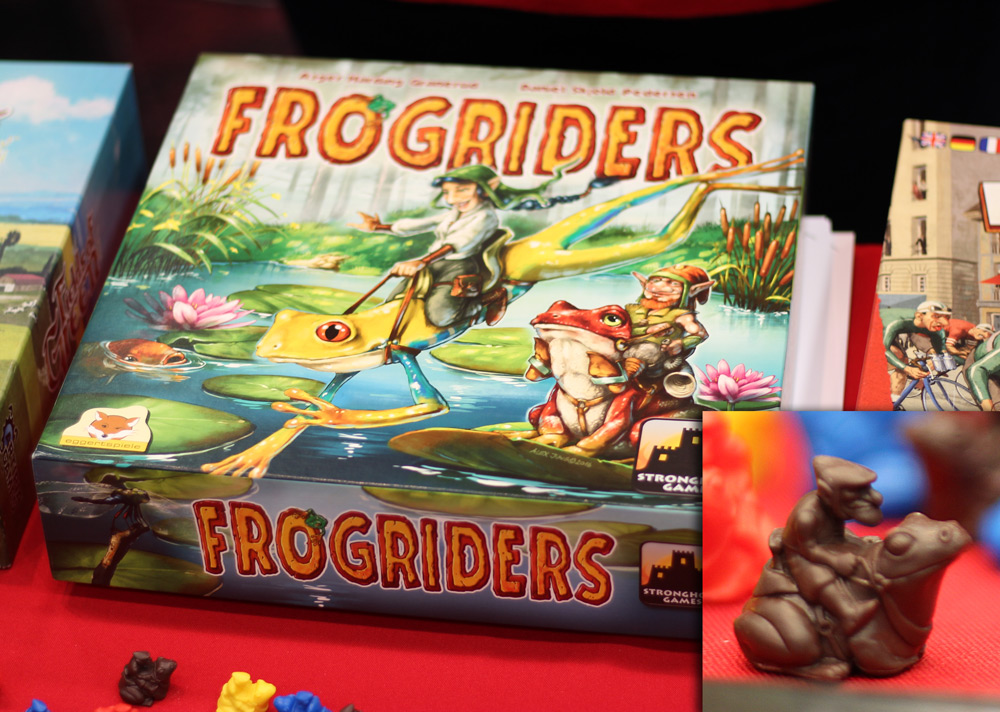
For instance, Stronghold Games’ Stephen Buonocore describes his company’s games as filling the niche for all kinds of gamers, Survive: Escape from Atlantis being our favorite thus far. Fortunately, Stronghold still provides a nod for casual gamers on occasion, as demonstrated this year by Frogriders. Frogriders features a large and colorful board and sculpted miniature player pieces. In the game, players try to jump over their opponents, similar to Checkers. The twist? When you collect an opponent’s piece, you can keep it for scoring or turn it in to use its special ability.
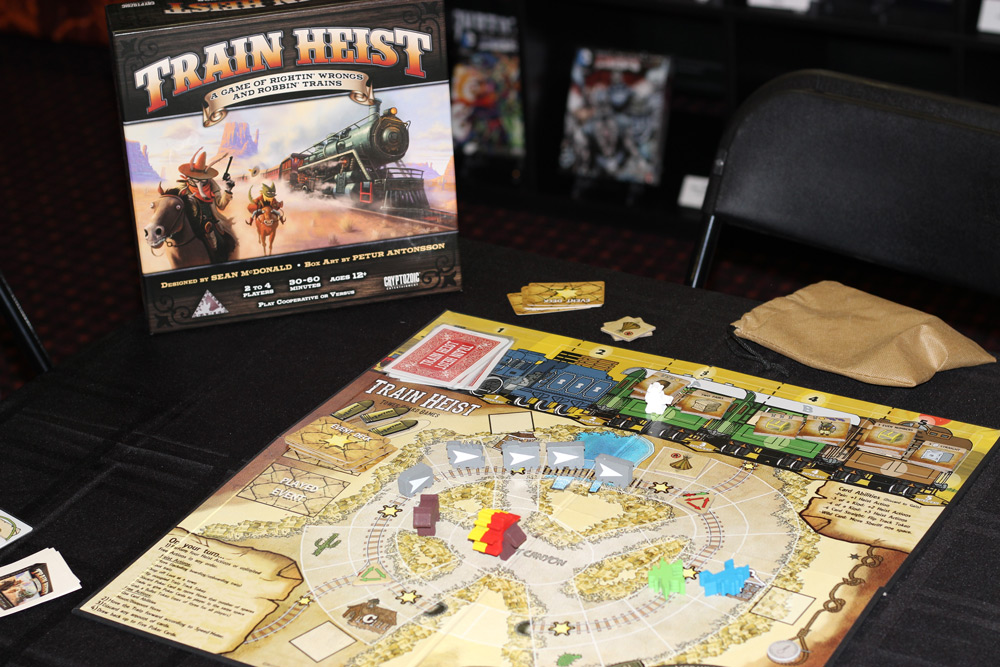
Train Heist from Cryptozoic is a cooperative game that stands out from the rest of their line. Players join together to stop the corrupt Sheriff from stealing all of the townspeople’s earnings. As noted by the publisher, Train Heist uses a free-range board where players can go anywhere they need to get the job done. Also, while the train moves around the board, it triggers random hectic events.
4. CoolMiniOrNot (CMON) Isn’t Just About Miniatures Anymore
Another case in point: the company once known as CoolMiniOrNot, named after the niche miniature painting forums they founded in 2001, has rebranded itself as CMON. Along with the rebranding comes a tangible momentum towards the casual gaming space.
CMON is not to be underestimated by casual gamers. Fresh off the heels of incredible cash cow miniatures games like Zombicide and Massive Darkness, they seem to be ready to invest a lot of money in new product lines.

In addition, CMON is now poised to dominate the creative market with award-winning game designer Eric M. Lang (Quarriors, Blood Rage) taking the helm as Director of Game Design. With 20 years of industry experience, we expect he will be an amazing contributor to CMON’s future titles.
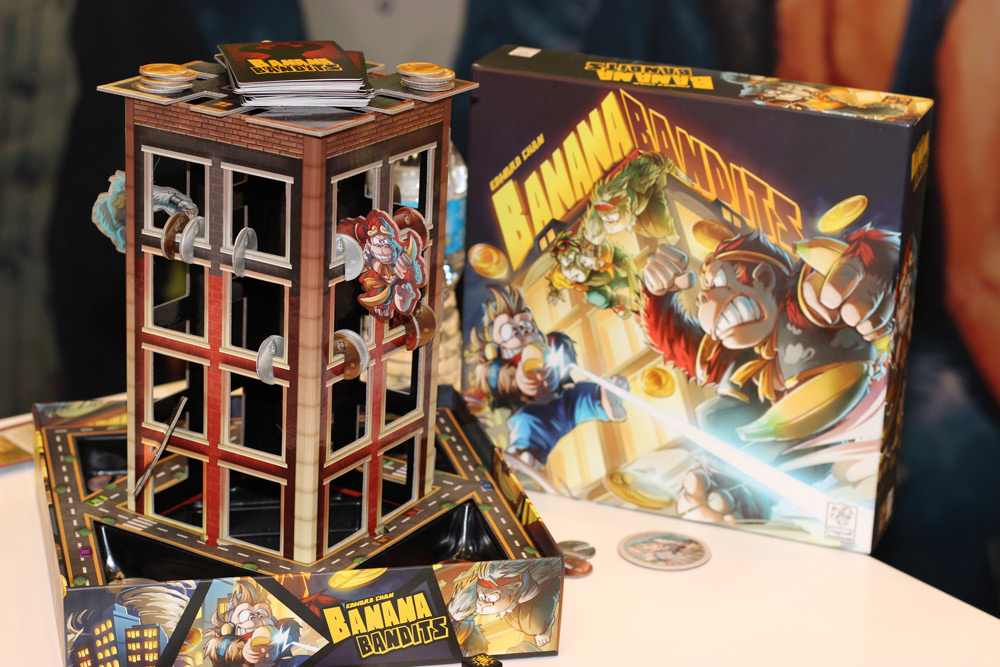
The quality of their upcoming casual games is evidenced in their recent release, Banana Bandits. In this game, players take on the role of gorillas competing against each other to gather three coveted banana coins. They can earn banana coins by gathering gorilla coins that are held by the other gorillas (and are dropped one at a time as they move around the 3D building). On each turn, a player can choose to move, fight, draw/play cards, or collect coins in the room he is in. The colorful artwork, simple gameplay, and 3D board seem to call out to casual gamers, “Keep your eyes on CMON, we’ve got your back.”
3. Innovation in Casual Gaming Is Coming from Newer Publishers
While established publishers with a core gamer focus are trying their hands in the casual space, there are other, newer publishers that just seem to get exactly what we want as casual gamers. Among the top of this list are Renegade Games, Breaking Games, and Quick Simple Fun Games. But new to my list of casual game publishers to watch is Smirk and Dagger Games.
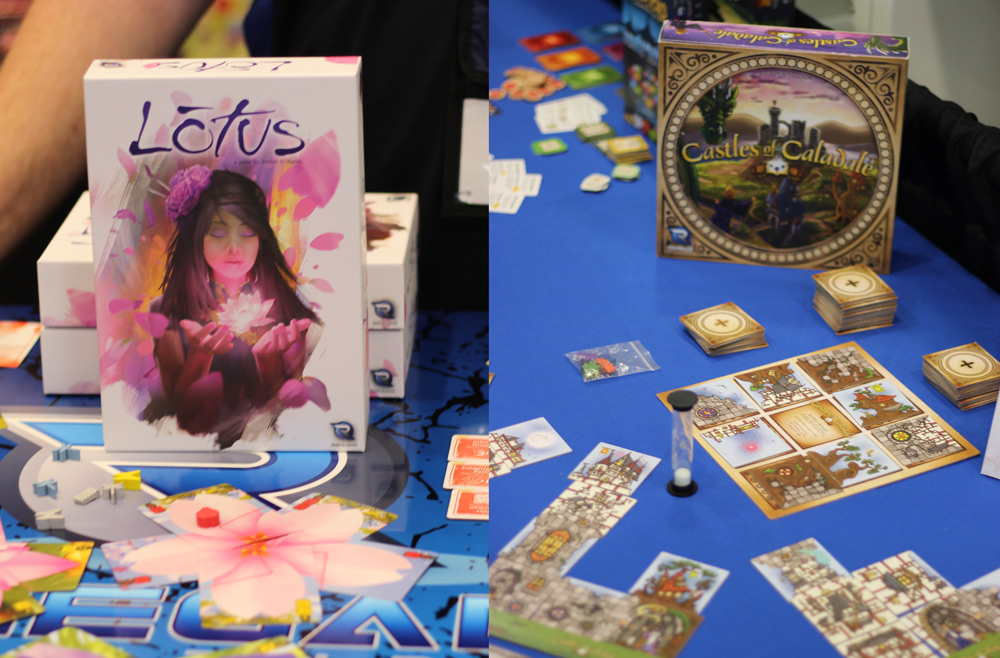
Pictured above are Lotus — a beautiful flower creation game — and Castles of Caladale. In Castles, players take turns drafting a tile and placing it in their own castle or setting it aside. The aim is to build the biggest castle possible while matching all the sides and not leaving any parts of it unfinished. The tiles can be rearranged at any time during the game. The game is elegantly simple, yet truly puzzling to fit together all the tiles in the best way.
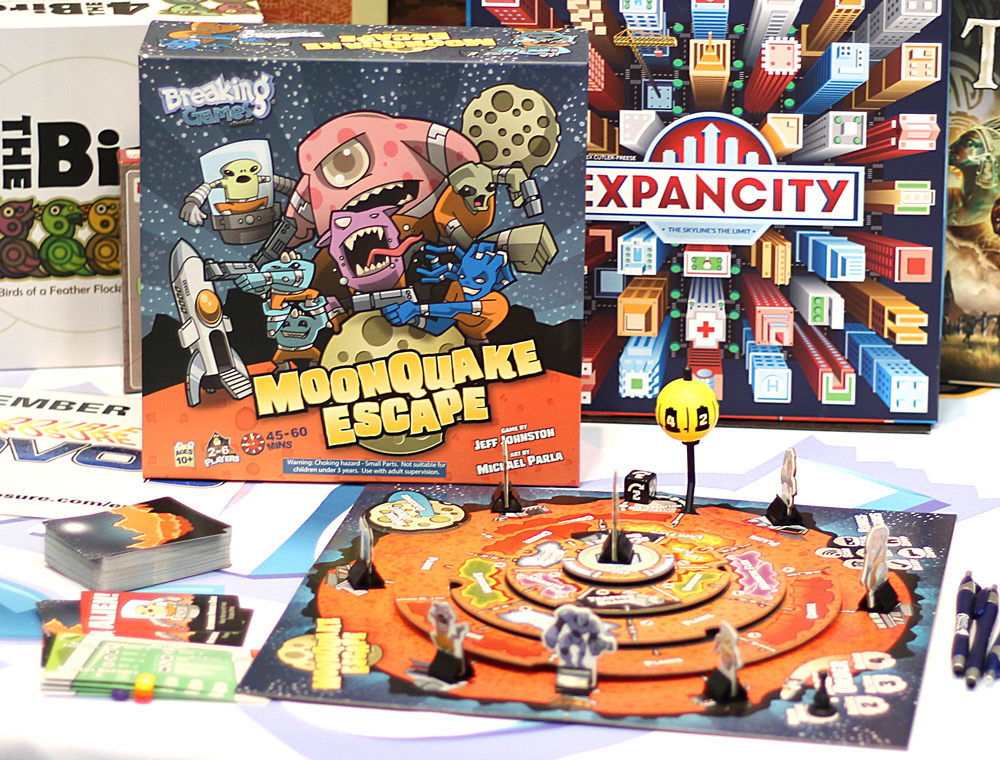
Breaking Games exploded onto our radar with a line of great casual games, starting with games like Letter Tycoon and, most recently, MoonQuake Escape. This game was a beast to produce (see our recent interview) but looks incredible. The game features a spinning, changing 3D surface that represents the doomed prison planet of Zartaclaton. The goal is to reach the rescue rocket before your opponents do. You must decide which actions to take, including finding and stopping other players, stealing key equipment, or hiding yourself more effectively.
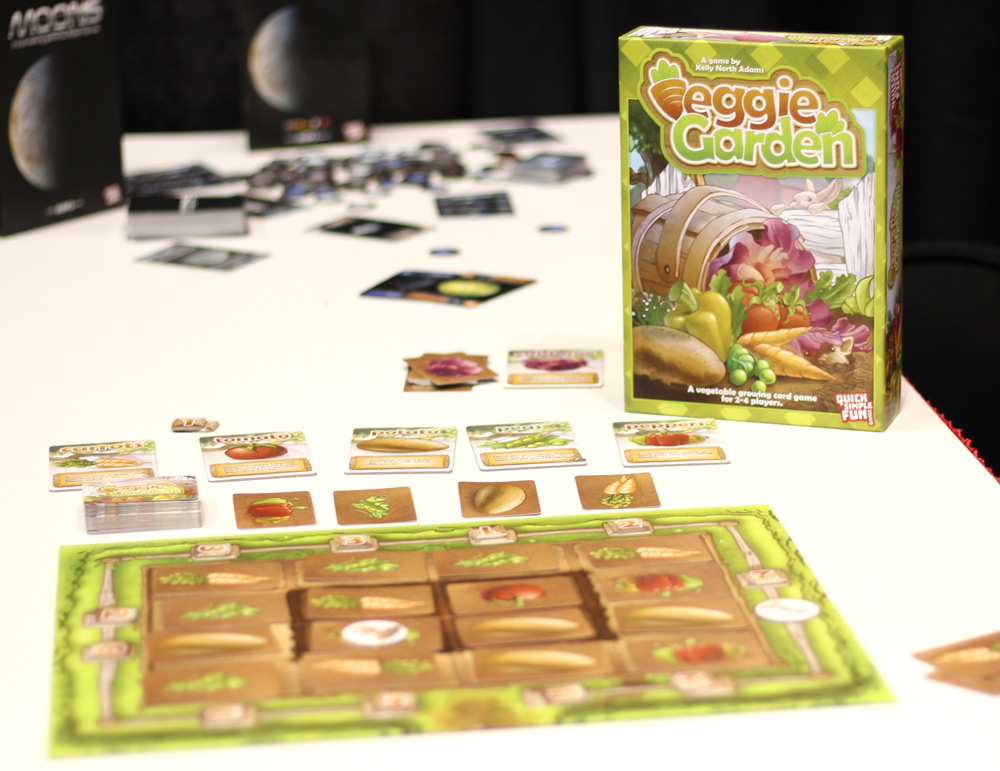
Quick Simple Fun Games got us hooked with their imported hit, Celestia. Now, they have scaled up their team and are ready to rock with more great games. Pictured above is Veggie Garden, a game where players rearrange the various vegetables in the garden to position them in the highest scoring areas they can. The problem is, the groundhog and bunny are continually popping up to shift things around and make things more difficult.
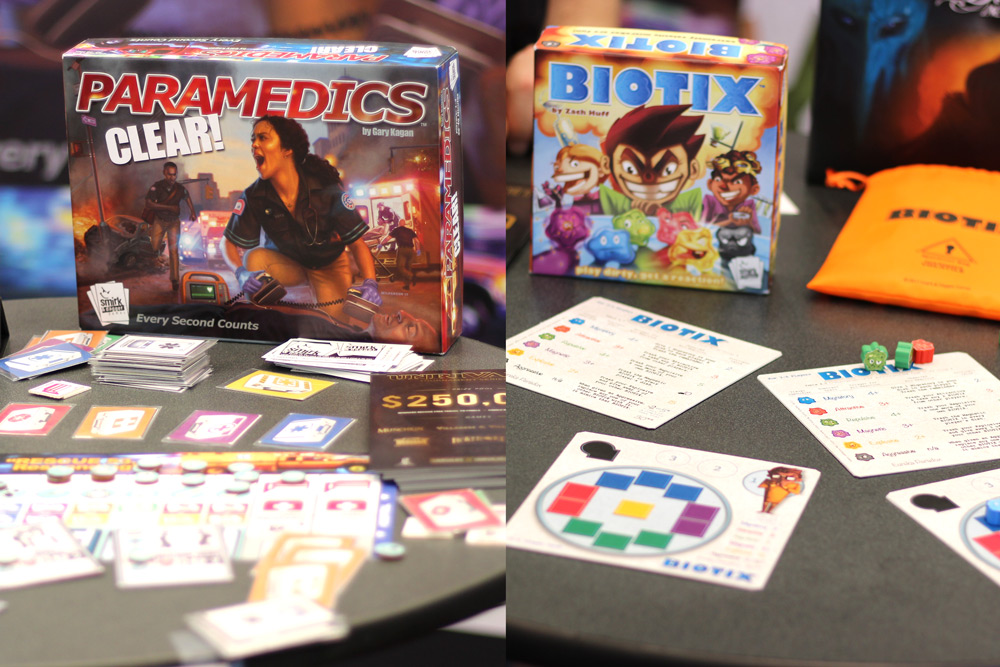
Certainly, Smirk and Dagger Games has produced some fun casual games in the past, such as the awesome (albeit slightly over-complicated) Nevermore. But suddenly they have moved near the top of my list with their latest offerings, Paramedics Clear! and Biotix.
Paramedics Clear! is a real-time game in which players attempt to save as many lives as possible. There is some clear humor in the injuries people are suffering from (such as “board game injury”) and despite the life-saving theme, there is some healthy competition involved. In Biotix, players take turns placing microbes in their own (or each other’s) Petri dishes, some of them highly unstable — meaning they unleash plenty of havoc on the game. It’s a fun and simple game that we will be keeping our eye on when it is released later this year.
More than these games, however, is the new direction Smirk and Dagger Games is headed. The publisher is poised to do a massive scaling up of new games, with around 4-5 new titles this year (and eventually 8-10 per year). These will fit in both their original back-stabbing line and what was described to me by Curt Covert (owner of Smirk and Dagger) as the “Smirk and Laughter” line. Sounds right up our alley.
2. Social Bluffing Games Are Here to Stay
Games like Mafia and Werewolf have been around for ages. But recently gaining traction in the industry are games like Spyfall and the always-popular One Night series from Bezier Games, which will soon include a new game, Werewords.
One of our favorites in this category is Sheriff of Nottingham. The publisher of Sheriff, Arcane Wonders, has outdone itself with one of my favorite games from the show, Spoils of War.
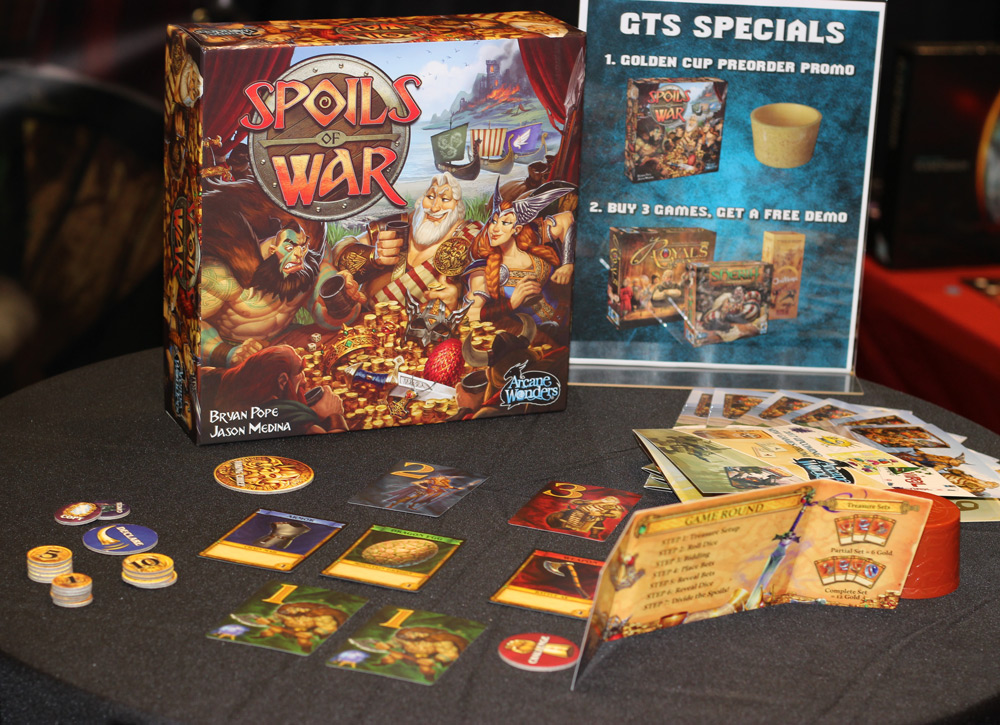
The best way to describe Spoils of War would be Liar’s Dice on Viking Steroids — if only such a thing existed. Players take on the role of Vikings who must decide how to split up the treasures amassed during their many battles.
Players simultaneously roll their dice cups and place them face down, keeping their dice hidden from other players. Then they take turns making a declaration about how many dice of a certain number were rolled in total, e.g. “ten threes.” The problem is that the player may be bluffing about what he is holding, so the accuracy of each declaration is anyone’s guess. Each declaration must be higher than the previous one, until one player decides to end the round by challenging the previous player. All players then join in with either the declaring player or the challenger, betting coin tokens based on how confident they are. After revealing all the dice, the players who were correct then take turns collecting cards in the order of highest bet to lowest. The losing players must discard their bets. The cards collected can either score points or allow the player to carry out a special effect, often throwing a wrench in other players’ bluffing strategies.
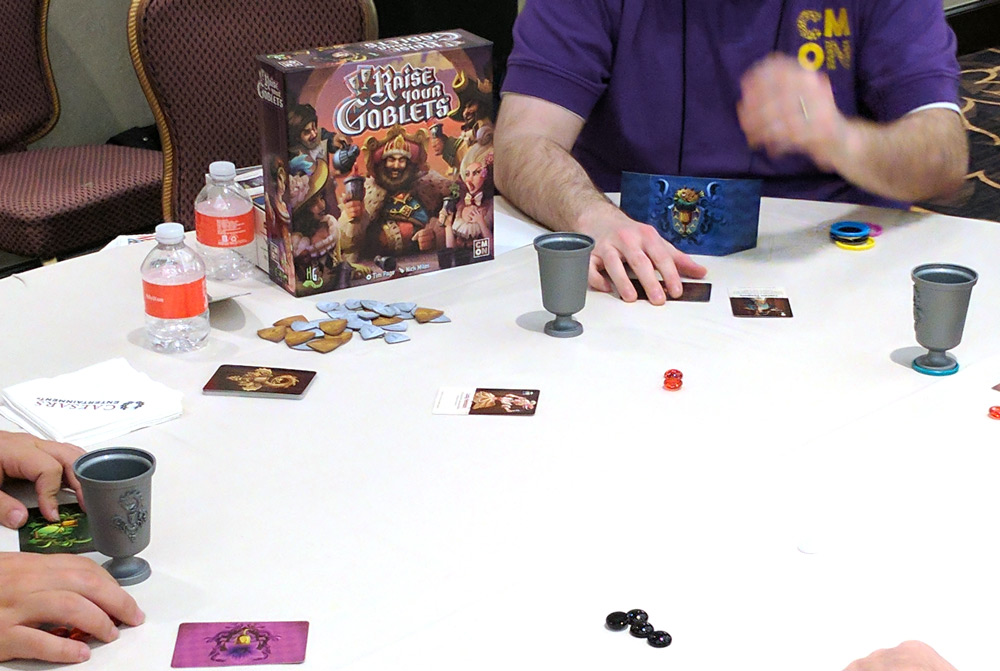
Raise Your Goblets is another new title from CMON that proves their worth as a casual game publisher. In fun value, this game ranks almost as high asSpoils of War and is reminiscent of movie scenes such as The Princess Bride, in which opponents fill their glasses with wine or poison, then switch them around and decide which glass to drink from.
On each turn, the current player takes two actions. Actions include secretly dropping a marble in your goblet (representing either wine, poison, or antidote), peeking inside your goblet, rotating all goblets left or right, and swapping your goblet with someone else’s. Goblets quickly become difficult to keep track of. When one player has served all his wine, he can call for a toast, after which each player takes one final action. Then everyone “drinks” from their goblet, finding out whether they live or die. It’s wild and crazy and random — and a ton of fun.
1. Themes are Increasingly Modeling Real Life Experiences
Abstract games are all well and good, but there is something about a good theme that draws me in. I encountered some unique themes like monster ranching (Isle of Monsters by Mayday Games), a feline Sherlock Holmes (Purrrlock Holmes by IDW Games), and even sunbathing on the beach (High Tide by Queen Games).
While game designers often cook up a recipe of their favorite game mechanisms and slap on a fitting theme afterwards, this is certainly not always the case. In fact, I’m seeing more and more games going the other way — starting with a theme or experience and modeling out the gameplay in a tabletop form. Take, for instance, these new and upcoming titles I encountered at the show.
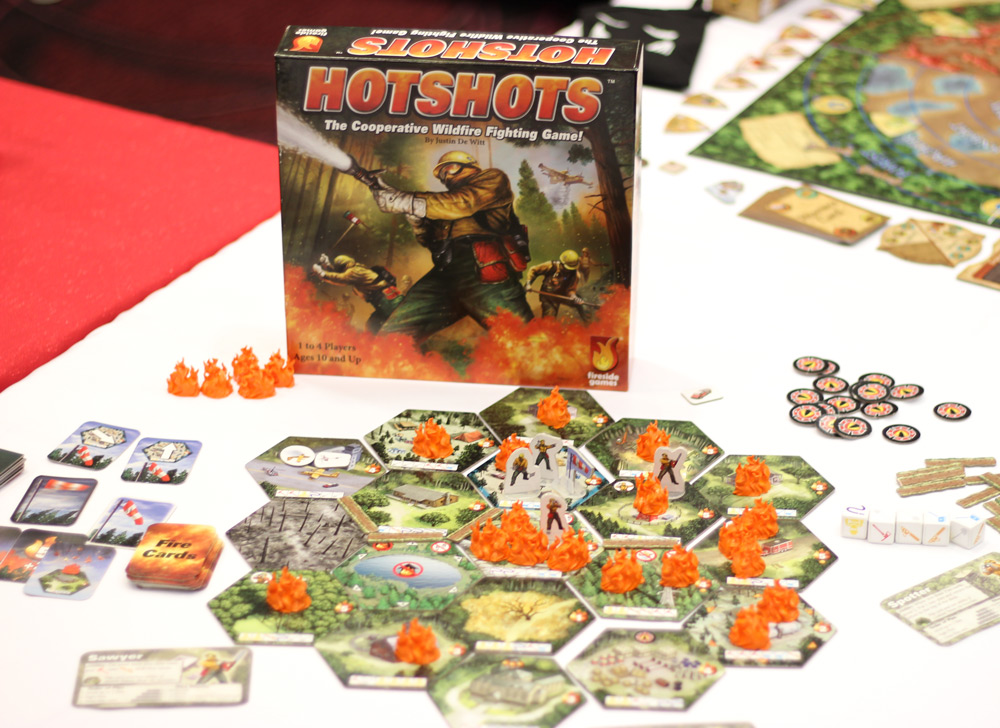
Hotshots is an upcoming title from Fireside Games, publisher of the cooperative game Castle Panic, that I am confident will be a hit when it is released this summer. Also a cooperative game, Hotshots models out the heroic nature of fighting wildfires that spread through the forest causing destruction. Players must use their unique abilities to work together and extinguish the fire before it’s too late.
I played a full session of this game with the designer and a few others and we got utterly destroyed. It’s tough — which is a good thing. I liked the press-your-luck dice rolling mechanism, in which you can continue to re-roll dice as long as you keep rolling icons that match those displayed on your current tile. You have to choose wisely when to stop rolling, or else a new flame will be added to your tile. In addition to this, I was struck by how complete and well-modeled the hotshot theme was implemented — from the ways the fire spreads onto adjacent tiles, to the different roles and the even the use of aerial firefighting, this game is the real deal. It’s a solid game that feels casual, at least when it is explained by the designer — hopefully the rulebook will be simple enough to pick up for the average casual gamer.
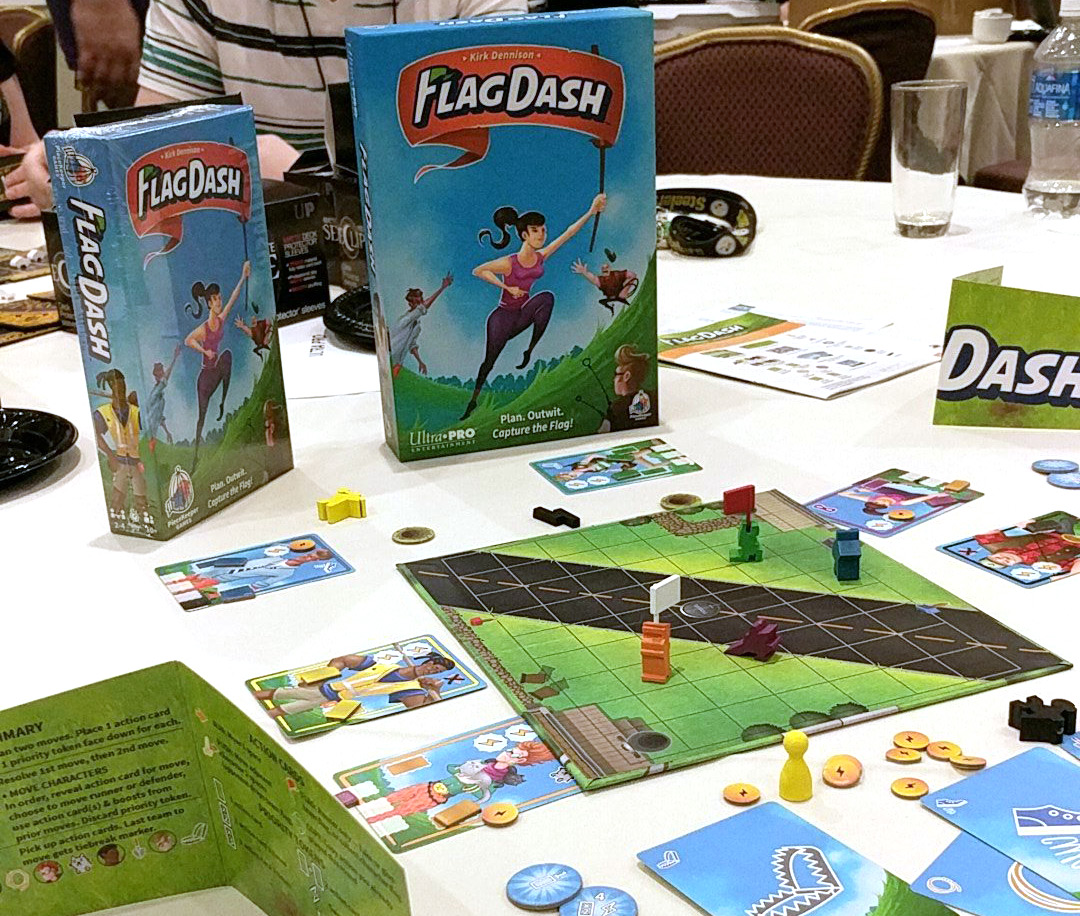
Who doesn’t love Capture the Flag? I know I did when I was a kid. This widely-loved game has now found its way onto the table in Ultra PRO’s Flag Dash.
The object of Flag Dash is to return home with the opposing team’s flag or collect a complete set of flags your opponents are wearing. Each player or team of players controls two meeples — one on offense and one on defense. During each round, players secretly plan out two actions in advance, along with a priority token placed on each card. Actions are then carried out in the order of priority, from highest to lowest. Actions include movement in any direction, as well as a flag card that serves to pick up the opponent’s flag or pull a flag from an opponent’s waist. There is also a push card that causes an opponent to drop a flag and move several spaces.
Conclusion
2017 is shaping up to be a great year in casual gaming, yet again. The competition is definitely growing, which ultimately creates better options for casual gamers. With all of the great companies and games coming into being, as well as the increased frequency of releases, there is no more room in the market for mediocrity.
Go big on artwork, theme, and gameplay; or go home.
Chris James is the Editor-in-Chief of Casual Game Revolution and Casual Game Insider magazine. To read about more great games and topics as curated by Chris, be sure to subscribe to Casual Game Insider.




